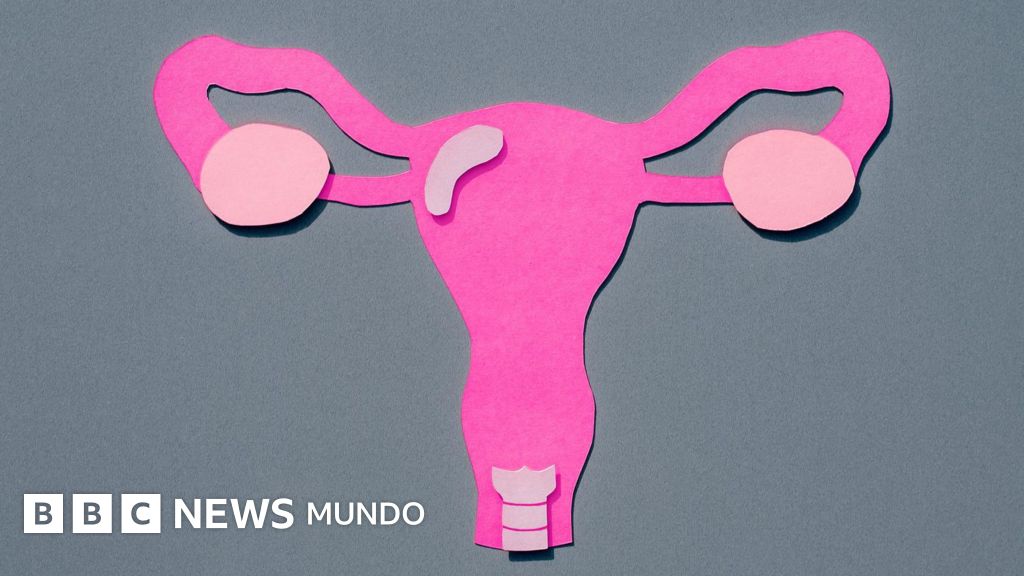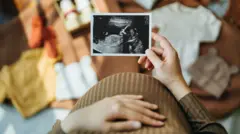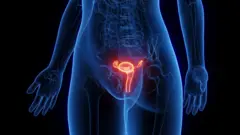

Image source, Getty Images
-
- Author, Michelle Spear
- Author's title, The Conversation*
The ancient theory of the wandering uterus suggested that many ailments in women were because the uterus moved and wandered through the body in search of moisture.
According to these theories, the uterus could freely wander through the body, pressing the liver or lungs and causing symptoms such as dyspnea, fainting and emotional anguish, something that was later called “hysteria”, from the Greek hystera (uterus).
The treatments included fumigating the lower part of the body with aromatic herbs to attract the uterus down, expose the nose to penetrating smells to remove it from the chest and add weight to the abdomen to prevent the uterus from rising.
Marriage and pregnancy were often prescribed as remedies, under the belief that an active uterus was happy and well carried.
In the 18th century, advances in anatomy and dissection began to refute the idea that the uterus could physically move. However, the legacy of the wandering uterus lasting until well into the twentieth century in the diagnosis of “female hysteria”, a general term without evidence to encompass a multitude of symptoms.
While the uterus does not float like a globe in the thoracic cavity, it does change position. And this is important. Mobility is essential for fertility, menstruation, pregnancy and pelvic health.
How much does the uterus move?
The uterus is between the bladder and the rectum, suspended by a series of ligaments. These do not immobilize it, but allow it to balance and bow.
Its position can be in anteversion (tilted forward on the bladder), in retroversion (at an angle towards the rectum and the spine) or something intermediate. These variations are completely normal and usually vary.

Image source, Getty Images
That position is important. The uterine angle can affect the place where menstrual pain is experienced. In those who have the uterus in retroversion, the inconvenience can radiate to the lumbar area. For others, cramps feel more in the lower abdomen.
A tilled uterus can more directly press the bladder, which increases the need to urinate, especially at the beginning of pregnancy. On the contrary, a back inclination can press the rectum, which contributes to constipation or swelling.
During sexual excitement, the uterus rises slightly and lengthening the vaginal channel. During childbirth, it contracts strongly and rhythm, raising the cervix and helping to expel the fetus.
Even the cervix – the narrow opening at the base of the uterus – is not fixed. Its height, texture and opening vary throughout the menstrual cycle in response to hormonal signals. During ovulation, it rises and softens to allow the entry of sperm. Before menstruation, descend and become firm again.
Uterine tubes
Perhaps the most surprising anatomical revelation is that a uterine tube (also falpio called) on one side of the body can capture an ovule released from the opposite ovary. If there is a true search engine in the reproductive tract, that is the uterine tube.
Each month, during ovulation, fimbriae (digitiform projections at the end of the tube) travel the surface of the ovary, promoting the ovule released towards the entrance of the trunk.
The fallopian tube is not directly anchored to the ovary, but finds it. As a sea anemone in slow motion, explores, flexes and moves.

Image source, Getty Images
Once captured, the cilia (tiny structures similar to hairs that cover the internal surface of the tube) work together with the muscle contractions that move the ovule to the uterus.
This choreography is vital, but also explains the risk of ectopic pregnancy.
If a fertilized ovule is implanted in the tube instead of traveling to the uterus, it can mean a serious medical emergency. It is precisely the adaptability and the reach of the tube that makes it vulnerable.
The ovaries are also slightly mobile, suspended by ligaments that allow a certain degree of movement within the pelvic cavity. This becomes especially evident after a hysterectomy, when the removal of the uterus can cause ovaries to move, which sometimes complicates the obtaining of images or surgical planning.
While its movement is more limited than that of the uterus or tubes, it continues to play a role in pelvic dynamics. Rarely, it can cause ovarian torsion, a painful torsion of the organ that requires emergency care.
While mobility is normal, excessive movement or weakened support can cause problems. The uterine prolapse (when the uterus descends inside or beyond the vaginal channel) may be due to the weakening of pelvic soil muscles, which usually occurs after multiple births or due to changes related to age.
It is a mechanical, not moral failure. Unfortunately, history has not always treated it that way.

Image source, Getty Images
Similarly, adhesions of previous endometriosis or surgeries can limit natural mobility, causing intense pain as organs that should slide each other and inflame.
While the uterus moves, it does it within anatomical limits and under the influence of ligaments and hormones, not by whim. The persistent myth of the wandering uterus reflected broader concerns about the female body: that it was unpredictable, rebel and needed control.
Today, with the benefit of image diagnosis techniques, dissection and anatomical research, we can replace that myth with a deeper understanding about the purpose of the mobility of the uterus.
*Michelle Spear is an anatomy professor at the University of Bristol, the United Kingdom.
This article was published in The Conversation and reproduced here under the Creative Commons license. Click here to read the Original version (in English).

Subscribe here To our new newsletter to receive every Friday a selection of our best content of the week.
And remember that you can receive notifications in our app. Download the latest version and act.